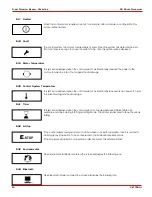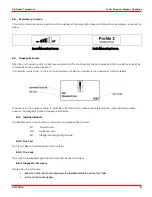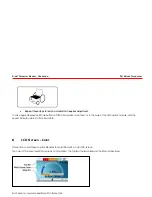
PG D
RIVES
T
ECHNOLOGY
R-
NET
T
ECHNICAL
M
ANUAL
- O
PERATION
12 Battery
Charging
To charge the wheelchair batteries connect the charger plug into the battery charger socket on the R-net JSM. You will not be
able to drive the wheelchair when the charger is connected.
To connect the charger plug, ensure the single pin is at the bottom, as shown in the following illustration, then offer the charger
plug to the R-net in a horizontal orientation. The molded guide on the R-net will help you to locate the plug. Ensure the plug is
pushed fully in position.
Do not exceed the maximum charging current of 12 A rms. Always use an off-board charger fitted
with a Neutrik NC3MX plug. Failure to observe these conditions could result in poor contact
resistance in the charger connector resulting in overheating of the charger plugs. This presents a
potential burn hazard for the user. PGDT accepts no liability for losses of any kind arising from
failure to comply with this condition.
Ensure that the charger plug pins are of the correct polarity to be compatible with the pin
polarity shown on the control system’s specific data sheet. Failure to observe this condition could
result in a burn hazard or fire hazard. PGDT accepts no liability for losses of any kind arising
from failure to comply with this condition.
Do not disconnect batteries or open-circuit the circuit breaker while charging is in progress.
Failure to observe this condition could result in a burns hazard or fire hazard. PGDT accepts no
liability for losses of any kind arising from failure to comply with this condition.
Only use the battery charger that has been supplied with your wheelchair. The use of incorrect
chargers could damage the batteries, wheelchair, control system or charger itself, or may result in
parts overheating creating the potential for burns or even fire. PGDT accepts no liability for
losses of any kind if the charger is incompatible with the control system (see Chapter 2, section
7) or any other part of the wheelchair system.
SK77981/4
35






























